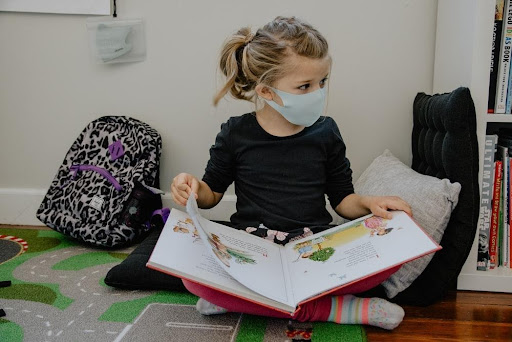Everything You Need to Know About Sight Words

When kids start learning to read, it’s important for them to practice reading sight words. Sight words are the most frequently used words that appear on every page of the textbook many times. Sight words include words like the, who, like, he, at, but, there, etc.
These terms appear so frequently in textbooks that young readers no longer have to try to sound them out. Because they are used so often, teachers make sure that novice readers are able to recognize and understand them as soon as they see them.
Learn More About Sight Words
Sight words are usually small because of which they are easily recognized. However, these are the words that can’t be sounded out. Sight words are classified into two categories, including frequently used words like it, will, at, and non-phonetic words like talk and the that can’t be sounded out.
For example, if you try sounding out the words “the” and “there,” you’ll understand that the spelling of these words is not straightforward in regards to how they sound out. Another reason it is encouraged for young readers to memorize sight words is that words like the, or, and cannot be easily represented by pictures.
In other words, some sight words do not follow the typical letter-sound correspondences. Therefore, children are encouraged to memorize these words by sight because they are commonly used and not always straightforward to sound out.
Children are introduced to sight words when they enter kindergarten. The number of sight words taught to kindergartners varies by the curriculum. However, they are taught between 100 to 300 words, with the first 100 being the most common words used in children’s textbooks.
Why It Is Important for Children to Recognize and Memorize Sight Words
Most sight words comprise words found on Dolch and Fry’s list. The revised Dolch list carries 220 words, which are also known as Dolch words. On the other hand, Fry’s sight word list comprises 300 words that are also known as Fry words.
Most of us won’t probably remember learning words like “the, there, at, our, this, that,” but for many young readers, they can be challenging to learn. Sight words are important to memorize because they build speed and frequency.
It is important for children to recognize and understand sight words because they promote comprehension and provide readers with clues to the context of the text. When children understand and are familiar with sight words, they are able to understand the meaning of sentences.
Sight words not only promote reading fluently but are also considered important because they help children write more efficiently too. In other words, sight words are there to prepare them for their reading journey.
What are Sight Word Books?
Sight word books are a great place for children to start looking for sight words. There are many sight word books for kindergartners that can help them memorize, recognize, and understand sight words. Many sight word books carry fun illustrations and include characters and interesting storylines.
Sight words are confidence boosters that can help children read the text more confidently and fluently. You might think that these words are so common that your child might not need sight word books to be able to memorize and recognize them. However, as many sight words defy standard phonetic convention, meaning they can’t be sounded out, it becomes difficult for children to build deeper connections with them.
A few good sight word books for kindergartners include:
- The Cat in the Hat by Dr. Suess
- Richard Scarry’s Best Word Book Ever
- I’ll Teach My Dog 100 Words by Michael Frith, illustrated by P.D. Eastman
- My Sight Words Workbook: 101 High-Frequency Words
- 180 Days of Practice- Kindergarten Workbook Set
- Write-and-Learn Sight Word Practice Pages
- My 100 Must Know Learn to Write Sight Words
While introducing your child to sight words, it’s important not to introduce two sight words at the same time that are similar, for example, “well” and “will” and “no” and “on.”
Start Teaching Reading for Free Now!
Access Level 1’s four interactive stories and the accompanying supplemental resources to teach elementary students how to read. No credit card is needed. Join the 42,635 teachers and students using our reading program.
